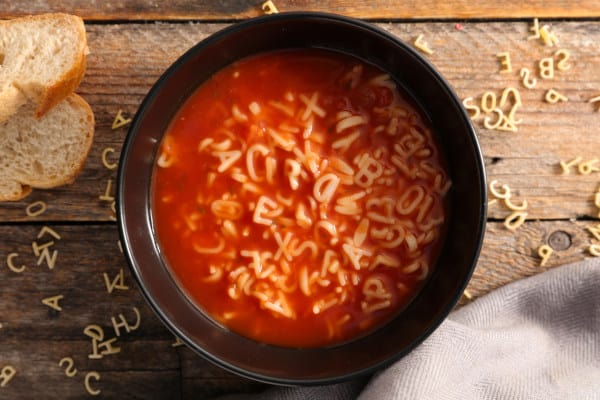What all of those letters mean, what organizations they represent, and what you must follow to install fire sprinkler systems properly
Fire protection codes, standards, and guidelines are not all the same thing. Each of these serves a unique purpose and carries a different “weight” for enforcement. A code is a broad document that may be adopted by a jurisdiction which includes overall guidance and requirements for specific structures or processes. When adopted, a code and all referenced standards—the specific standards that should be utilized and met within it, such as NFPA 13—become enforceable by law. In contrast, a guide is a document that shares best practices for a specific subject and is generally not enforceable as law.
Let’s look at an example: NFPA 1: Fire Code is the broad document that tells users when a sprinkler system is required. The state of Florida has adopted the 2015 edition of NFPA 1 and NFPA 101: Life Safety Code (with a few state-specific changes and amendments) to make the Florida Fire Prevention Code. The Florida Fire Prevention Code is a minimum standard that all jurisdictions must meet, though each municipality can make their own amendments to the fire code—as long as they are more stringent, and not less.
NFPA 1 then references NFPA 13: Standard for the Installation of Sprinkler Systems, which specifically outlines how to install a sprinkler system. Thus, given that NFPA 13 is a model standard, is it also the law? In this context, it certainly can be.
And here’s where it may get more confusing: while NFPA 13 is the standard for the installation of sprinkler systems, a cursory glance through the document will reveal that there are additional referenced codes, standards, and guidelines that form a confusing “alphabet soup” of other organizations. This blog explains what they are, what they represent, and why you should pay attention to them.
For fire sprinkler system components that meet the requirements of NFPA 13 and many of the standards referenced here, or are used in conjunction with materials that require them, browse QRFS’s selection of concrete anchors, pipe and accessories, flexible pipe drops, hydrostatic testing equipment, and sprinkler heads.
Who are these organizations and why are their documents important to an NFPA 13 fire sprinkler installation?
Chapter 2 of every NFPA standard is entitled “Referenced Publications.” This chapter identifies all of the outside documents that are referred to within the document being viewed. Beyond the 32 NFPA publications referenced in NFPA 13, the standard references documents from eight other organizations:
- ACI — American Concrete Institute
- ASCE — American Society of Civil Engineers
- ASME — American Society of Mechanical Engineers
- ASTM — American Society for Testing and Materials
- AWS — American Welding Society
- AWWA — American Water Works Association
- IEEE — Institute of Electrical and Electronics Engineers
- UL — Formerly, Underwriters Laboratories
Let’s explain what each one is and how their input applies to NFPA 13:

ACI — The American Concrete Institute
“The American Concrete Institute (ACI) is a leading authority and resource worldwide for the development, distribution and adoption of consensus-based standards, technical resources, educational programs, and proven expertise for individuals and organizations involved in concrete design, construction, and materials, who share a commitment to pursuing the best use of concrete.”
NFPA 13 requires that concrete anchors and fasteners for sway bracing, hangers, and pipe stands must meet the requirements of ACI 355.2: Qualifications of Post-Installed Mechanical Anchors in Concrete and Commentary. This document is included in NFPA 13, Section 18.7 (Hangers and Fasteners Subject to Earthquakes), to demonstrate how to properly install and protect sprinkler piping in seismic areas.
The shear and tension values for determining loads can also be calculated using the formulas included in ACI 318: Building Code Requirements for Structural Concrete and Commentary, which is referenced in Chapter 17 of NFPA 13.

ASCE — The American Society of Civil Engineers
“ASCE is a leading provider of technical and professional conferences and continuing education, the world’s largest publisher of civil engineering content, and an authoritative source for codes and standards that protect the public.”
ASCE 7: Minimum Design Loads of Buildings and Other Structures is referenced in NFPA 13 to provide the formulas and seismic coefficient that are to be used for determining the horizontal force acting on a brace.
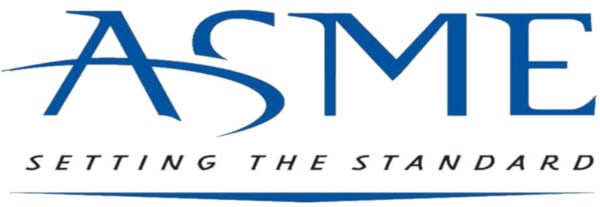
ASME — The American Society of Mechanical Engineers
“ASME is a not-for-profit membership organization that enables collaboration, knowledge sharing, career enrichment, and skills development across all engineering disciplines, toward a goal of helping the global engineering community develop solutions to benefit lives and livelihoods.”
The ASME standards are utilized in NFPA 13 to provide direction in the areas of pipe materials and fittings, underground piping materials specifically, and elevators. All pipe and tubing used in the construction of a fire sprinkler system must be listed in accordance with one of the ASME standards outlined in the standard.
From the 2019 edition of NFPA 13
3.2.3* Listed. Equipment, materials, or services included in a list published by an organization that is acceptable to the authority having jurisdiction and concerned with evaluation of products or services, that maintains periodic inspection of production of listed equipment or materials or periodic evaluation of services, and whose listing states that either the equipment, material, or service meets appropriate designated standards or has been tested and found suitable for a specified purpose.
These permitted pipe and material specifications are covered in great detail in various referenced ASME documents. The allowed materials for pipe, fittings, and underground fire mains can include cast iron, malleable iron, steel, or copper.
A more common NFPA 13 reference to ASME standards (which is also referenced in various other NFPA standards) is ASME A17.1: Safety Code for Elevators and Escalators. Its particular use in NFPA 13 is to let the user know that if a sprinkler head is omitted from the top of the elevator shaft, the elevator car must be constructed in accordance with ASME requirements.
From the 2019 edition of NFPA 13
9.3.6.6 The sprinkler required at the top of the elevator hoistway by 8.15.5.5 shall not be required where the hoistway for passenger elevators is noncombustible or limited combustible and the car enclosure materials meet the requirements of ASME A17.1, Safety Code for Elevators and Escalators.
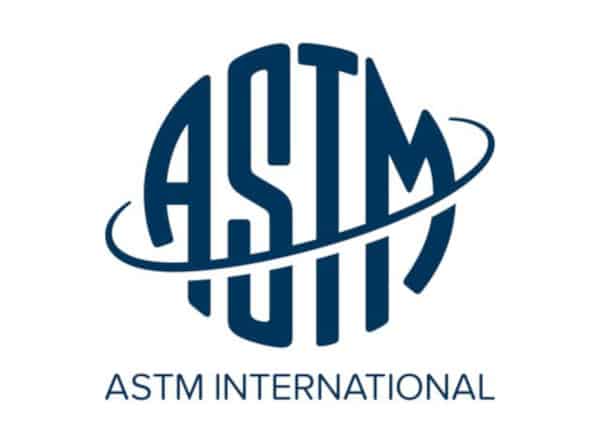
ASTM — ASTM International (formerly known as the American Society for Testing and Materials)
“ASTM International is a globally recognized leader in the development and delivery of voluntary consensus standards. Today, over 12,000 ASTM standards are used around the world to improve product quality, enhance health and safety, strengthen market access and trade, and build consumer confidence.”
More standards are referenced from this organization than any other in NFPA 13. ASTM E84, ASTM E136, and ASTM E119 are utilized to provide the test specifications that a material must pass in order to meet the definitions of “combustible,” “limited combustible,” or “noncombustible.” These definitions play an important role in determining areas where a fire sprinkler is required or where one may be omitted. As with the ASME standards, referenced ASTM standards can be found in the tables for listed types of pipe, fittings, and underground piping that are permitted for use in the construction and installation of a fire sprinkler system.
Two references of particular importance are ASTM C635: Standard Specification for Manufacture, Performance, and Testing of Metal Suspension Systems for Acoustical Tile and Lay-in Panel Ceilings and ATSM C636: Standard Practice for Installation of Metal Ceiling Suspension Systems for Acoustical Tile and Lay-In Panels.
Many sprinkler contractors employ the use of flexible sprinkler pipe fittings. These flexible pipes provide several benefits to the contractor and building owner including reduced labor cost, improved seismic performance, and ease in relocation for future building renovations or remodeling. However, in order for these flexible drops to be permitted, the suspended ceiling must meet the construction requirements of ASTM C635, and the ceiling installation requirements of ASTM C636.

For some concealed spaces, “broadly defined as a non-occupied space that is created by building construction,” fire sprinklers may not be required. Typically, this would only be permitted for those constructed of noncombustible, limited combustible, or fire-resistive materials. However, if combustible materials meet the testing and performance criteria of ASTM E84 or ASTM E2768, then fire sprinklers may also be omitted under certain conditions.
From the 2019 edition of NFPA 13
9.2.1.11 Concealed spaces where rigid materials are used and the exposed surfaces, in the form of which they are installed, comply with one of the following shall not require sprinkler protection:
(1) The surface materials have a flame spread index of 25 or less, and the materials have been demonstrated not to propagate fire more than 10.5 ft (3.2 m) when tested in accordance with ASTM E84, Standard Test Method for Surface Burning Characteristics of Building Materials, or UL 723, Standard for Test for Surface Burning Characteristics of Building Materials, extended for an additional 20 minutes.
(2) The surface materials comply with the requirements of ASTM E2768, Standard Test Method for Extended Duration Surface Burning Characteristics of Building Materials (30 min Tunnel Test).

AWS — The American Welding Society
“The American Welding Society (AWS) was founded in 1919, as a nonprofit organization with a global mission to advance the science, technology and application of welding and allied joining and cutting processes, including brazing, soldering and thermal spraying. AWS strives to move the industry forward in both thought and action, as well as inspire new generations to see the exciting career opportunities available today.”
AWS standards appear only twice within the 2019 edition of NFPA 13, and both references are in Chapter 7. The first is within Table 7.3.1.1 which provides a list of standards for approved pipe and tubing materials. AWS A5.8: AMD1 Specification for Filler Metals for Brazing and Braze Welding is referred to for the use of brazing filler metals. And where sprinkler piping is to be welded, the procedure and personnel must meet the qualifications of AWS B2.1: Specification for Welding Procedure and Performance Qualification (7.5.2.5.2).
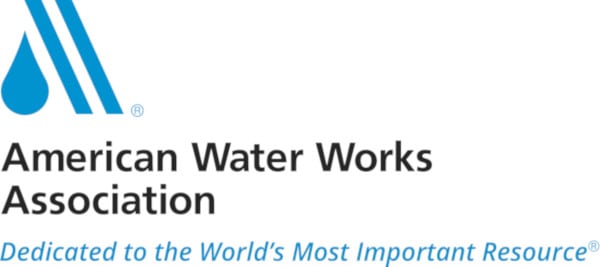
AWWA — The American Water Works Association
“The American Water Works Association is an international, nonprofit, scientific and educational society dedicated to providing total water solutions assuring the effective management of water … AWWA unites the diverse water community to advance public health, safety, the economy, and the environment.”
These standards are only referenced with respect to underground piping. Underground piping may be composed of ductile iron, concrete, or plastic. The AWWA publishes the standards that these materials must be manufactured to in order to meet the demands of a fire sprinkler system and their required pressures.
A key component in the approval and acceptance testing of a newly installed fire sprinkler system is the hydrostatic test. Though there is a standard test procedure, this may be modified based on the material type and tested in accordance with the guidelines provided in the material-specific AWWA standard.
From the 2019 edition of NFPA 13
6.10.2.2 Hydrostatic Test.
6.10.2.2.1* All piping and attached appurtenances subjected to system working pressure shall be hydrostatically tested at gauge pressure of 200 psi (13.8 bar) or 50 psi (3.4 bar) in excess of the system working pressure, whichever is greater, and shall maintain that pressure at gauge pressure of ±5 psi (0.34 bar) for 2 hours. [24:10.10.2.2.1]
6.10.2.3* Other Means of Hydrostatic Tests. Where acceptable to the AHJ, hydrostatic tests shall be permitted to be completed in accordance with the guidelines provided in AWWA C600, Installation of Ductile-Iron Mains and Their Appurtenances, AWWA M9, Concrete Pressure Pipe, AWWA M23, PVC Pipe — Design and Installation, or AWWA M55, PE Pipe — Design and Installation, as long as the test pressure and test duration requirements of 6.10.2.2.1 are still employed. [24:10.10.2.3]

IEEE — The Institute of Electrical and Electronics Engineers
“IEEE is the world’s largest technical professional organization dedicated to advancing technology for the benefit of humanity.”
Chapter 30 of NFPA 13 is dedicated to the installation of fire sprinkler systems aboard marine vessels. Standard IEEE 45: Recommended Practice for Electrical Installations on Shipboard–Design is referenced in section 30.4.12.8 in relation to the wiring requirements for sprinkler alarm signals and devices.
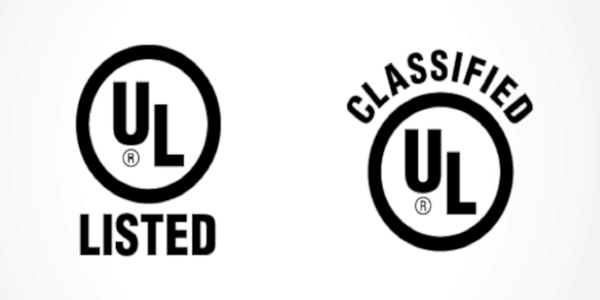
UL (Formerly, Underwriters Laboratories)
“Our mission is working for a safer world…We empower trust by exploring safety, security and sustainability in new markets and technologies.”
UL is an independent testing laboratory which tests a wide range of products for safety and quality. It is the most common organization that will list materials for use in fire protection systems, and all products that have been tested and approved by UL will bear its mark. The presence or absence of this mark can be a valuable resource in determining whether a sprinkler head is legitimate or counterfeit. The referenced UL standards appear in the annex section of NFPA 13 to provide examples of listed products that can be utilized in fire sprinkler systems.
From the 2019 edition of NFPA 13
A.7.1.1 Included among items requiring listing are sprinklers, some pipe and some fittings, hangers, alarm devices, valves controlling flow of water to sprinklers, supervisory switches, and electrically operated solenoid valves. Products are typically investigated in accordance with published standards. Examples of standards used to investigate several products installed in sprinkler systems are referenced in Table A.7.1.1. This table does not include a comprehensive list of all product standards used to investigate products installed in sprinkler systems.
For a more thorough guide on what needs to be listed in fire sprinkler systems, read our blog: “UL Listed and FM Approvals: Which Listings Matter for Fire Protection Under NFPA 13?”
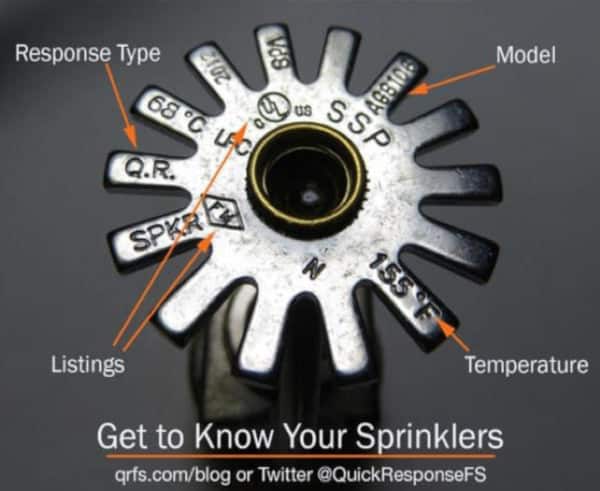
Know the referenced standards to meet the requirements of NFPA 13
Whether you are a fire sprinkler contractor or a building owner or representative who is responsible for new construction or facility maintenance, it is important to have at least a basic knowledge of the publications referenced here. Being familiar with the standards for testing and approving products that are used ensures that you are compliant with standards and code. And it helps ensure the quality assurance of installations, remodels, renovations, or repair work that may be done with a sprinkler system.
For fire sprinkler system components that meet the requirements of NFPA 13 and many of the standards referenced here, or are used in conjunction with materials that require them, browse QRFS’s selection of concrete anchors, pipe and accessories, flexible pipe drops, hydrostatic testing equipment, and, of course, sprinkler heads!
If you have questions or need help finding an item, call us at +1 (888) 361-6662 or email support@qrfs.com.
This blog was originally posted at blog.qrfs.com. Check us out at Facebook.com/QuickResponseFireSupply or on Twitter @QuickResponseFS.


